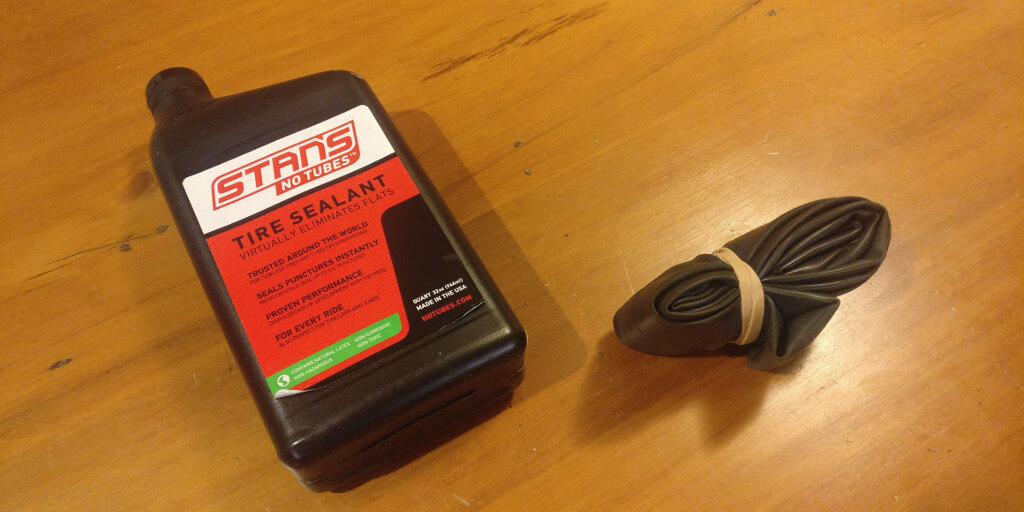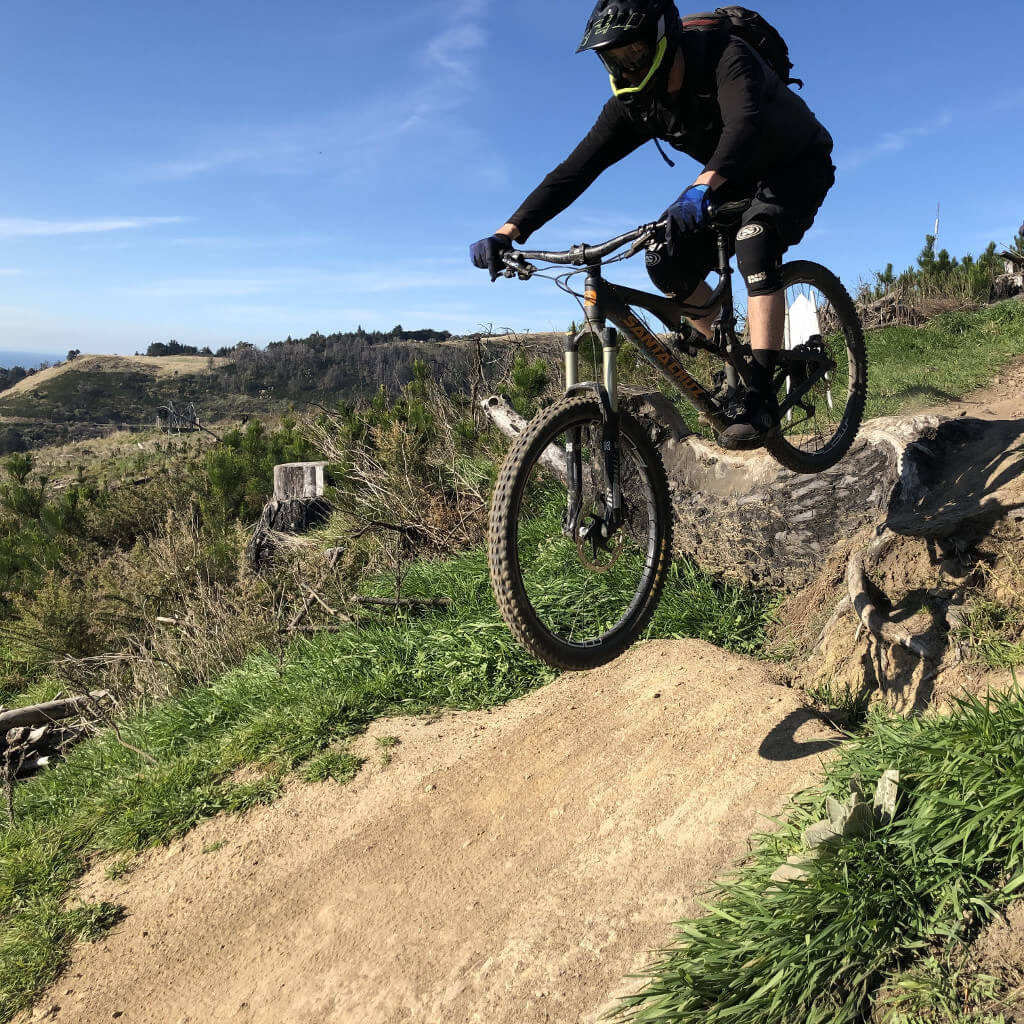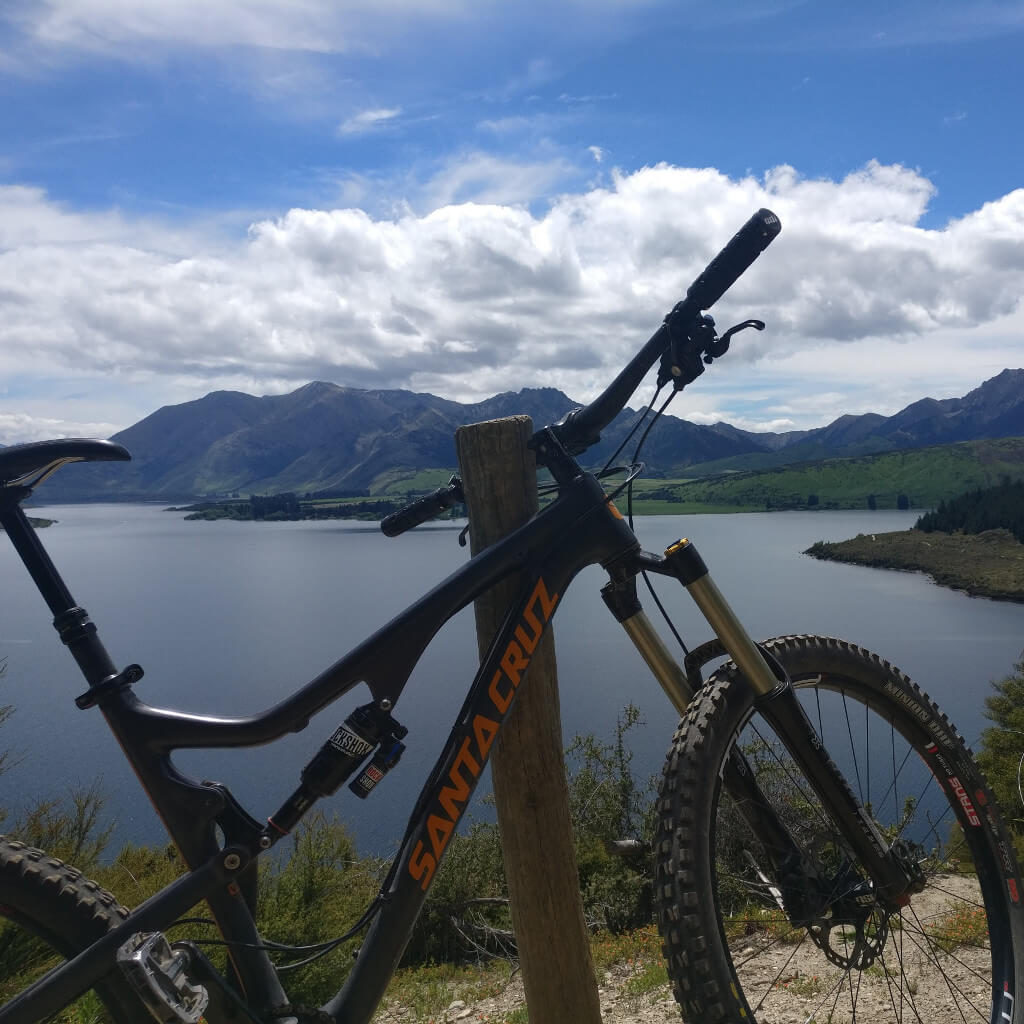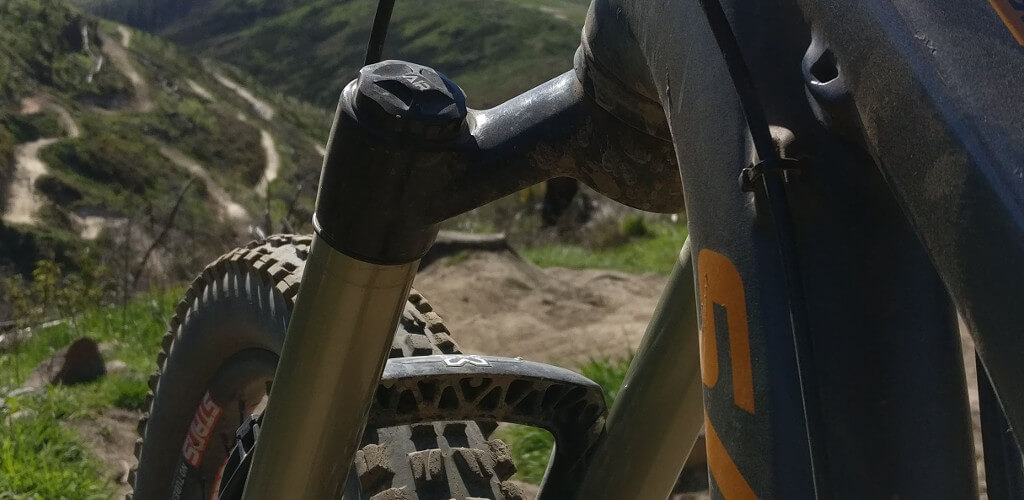Flat tires while mountain biking are mostly caused by pinch-flats (snakebite), punctures, torn sidewalls, burping your tire, or broken rims.
Something that’ll crop up for most folks sooner or later when they’re out on their mountain bike is the telltale hissing of a tire rapidly deflating.
This either spells trouble in the form of a forced maintenance break to fix the offending puncture, or even scuttling your days riding plans if no fix is available trailside.
Which is less than ideal.
But as we’ll go through today, there are a multitude of different reasons for a flat tire – and plenty of ways to try and prevent them in the first place, which is always best!
Tubes vs Tubeless
Okay so right out of the gate we need to make sure you’re familiar with Tubeless tires.
Option 1 – Tubes
At very least, all cheap bikes, and most older bikes, will have rubber inner tubes inside their tires (and usually only support this method). This tube is what is inflated to get to the desired tire pressure.
If you get a puncture hole in the tube, you’ll need to take the wheel off, remove at least one side of the tire from the wheels rim, and either patch the existing tube, or replace it with a new one.
Aside from the time taken to remove the wheel and tire etc, they’re pretty straight forward to deal with.
It’s possible to get a range of tube thicknesses, depending mainly on how aggressively you plan on riding the bike.

Option 2 – Tubeless
The go-to method for modern mountain bikers is removing the tube from the equation, and instead running wheels with air tight tubeless-ready (TR) rims, and TR tires which are designed to fit to the rim very snugly to help maintain a seal.
Into this is poured a small quantity of liquid tire sealant (such as Stan’s) – which is usually a gloopy mix of liquid with particles of latex in it.
A separate air valve is bolted into the rim (as there is no Tube with attached air valve).
Once the tire is reseated, air valve has been inflated, and tire has spun around a few times, it helps form a perfect airtight seal inside the rim/tire combo, and can maintain it’s tire pressure.
The benefits of tubeless over tubes are many:
- Punctures can self-heal in plenty of cases – e.g. a thorn or nail hole.
- Virtually eliminates snake bite punctures (pinch flats).
- Lower total wheel weight (especially rotational mass that needs to be accelerated).
- Possible to run lower tire pressures (better grip) without fear of pinch-flats.
- Arguably better feedback feeling from terrain.

Main causes of flats
Okay it’s time to take a look at all the different reasons we can get a flat tire while mountain biking (and then later we’ll look at how to stop them from happening!)
I’ve had basically all of these at one time or another (but since switching to tubeless many years ago this has dramatically reduced!)
Snake bite (pinchflat)
This is when your wheel hits a square edge (think kerb or corner edge of a rock), and squashes the tire enough to strike the rim.
In the process the tube is pinched inbetween the rim and rock with considerable force, often resulting in a “snakebite” – two punctures in the tube, one on either side.
This will usually deflate the tube very quickly.
If you’re running a tubeless setup on your bike you basically don’t need to worry about snakebite punctures anymore – though that’s not to say you can’t still destroy (or at least dent) a rim with that same rock edge.
I know this from experience!
But hey it’s all part of the sport – if I wasn’t ever breaking any bike parts maybe I’m not pushing myself hard enough to progress 😀
Puncture
A puncture can be caused by all sorts of things, but common examples could be a nail in the road, or a particularly vicious thorny branch on the trail.
The sharp item jabs through the tire (and tube if you are using them), and air can immediately start escaping.
These punctures can be fast or slow leak.
A very narrow thorn might result in a slow leak taking several hours to deflate – or a larger item could flatten your tire in 20 seconds.
Torn sidewall
Often caused by a sharp rock in a fixed position in the ground catching the sidewall of our tire and tearing a long hole in the rubber.
These types of flats are normally fully deflated within seconds of the impact.
It’s not uncommon for torn sidewalls to spell the end of your days riding.
They can be patched/repaired in many cases though, if you have the right supplies!
Some of the time this will be a pretty sturdy fix, but probably more often the damage is bad enough to the tire that all we’re trying to do is finish our ride – and will look to replace the damaged tire once we’re back in civilization.
Burping your tire
This is when you’re running tubeless tires, and somehow you manage to deform the tire enough that it creates a gap with the rim, and a bunch of air and sealant escapes violently!
One of the most common ways to do this is to rail through a berm (banked corner) very fast with very low tire pressures. This can roll the tire tread over off the side of the rim, and momentarily break that seal.
However it’s done, the result is usually that you have a noticeably lower pressure tire immediately – though it will often still be rideable (just be careful to not put dents in the rims etc as you’re riding out of the trail).
Broken rim
Wheels on a mountain bike (especially the rear wheel) take an absolute beating!
The forces involved are intense – think of a heavier rider, charging down a mountainside, carving through corners, riding off drops, chattering through rockgardens.
Over time (or through impact), there is every chance that the rim will get in some way dented, bent, wavy, cracked (or even broken in two).
This will usually cause major issues for your tire pressure – and will often result in a flat.
If you’re running tubeless, a crack in the rim might just allow all the air to escape.

So how can I stop getting flats on my mountain bike?
We’ve established there are plenty of ways your riding can come to an abrupt halt, but thankfully there are also several things we can do to prevent punctures.
Flats might not be 100% preventable – but we can definitely make them much less likely.
So what are our options?
Tubeless (ditch the tubes!)
One of the biggest improvements we can make to a mountain bike when it comes to trying to minimize flat tires, is to run tubeless.
How difficult and expensive this is to do depends on whether your existing rims and tires are tubeless ready (or whether it is possible to modify them with a purchased or “ghetto” tubeless setup.
Either way, as soon as we remove tubes from the situation, we basically won’t have to worry about pinchflats anymore, and many minor punctures from thorns or slivers of glass etc will just self heal with the small amount of liquid tire sealant spinning around inside.
Tire pressures (right for the situation)
Another thing which we have control over is our tire pressure.
Most mountainbikers will be well aware that if you run higher pressures, there is less rolling resistance (when riding long distances over non-technical terrain for example), while lower tire pressures will give you increased grip (via a larger more compliant rubber contact patch).
If using tubes, if you go too low with your tire pressures for the type of terrain that you’re riding however, you run the risk of snakebite punctures.
Alternatively if running tubeless wheels on your mountain bike usually you’ll be running much lower tire pressures – and if too low for your type of riding or the terrain, you may end up denting or cracking your rim, or roll the tire off the bead and at very least lose a bunch of pressure from the tire burping.
Better tires (suited to the riding you’re doing)
It’s important to know that there are many types of different mountain bike tires, of varying weight and sturdiness – designed for the various types of riding and terrain that mountain biking can include.
So if your bike has lightweight tires, either because they’re flimsy cheaper beginner tires, or lightweight racing XC tires, if you are riding aggressively on gnarly downhill trails, hitting rockgardens and other obstacles, you’re much more likely to get a flat than if you were running thick sidewall enduro / downhill tires with knobbly tread.
Experience and skill!
Last but not least, your skills on the bike can play a big part in how often you’re getting a flat out on the trail.
You’ll learn to read the terrain to anticipate where you need to be headed and what is coming up, and develop skills that allow you to position the bike better, jump over obstacles, and otherwise maintain more flow and have less wheel smashing moments.
Naturally this can depend a bit on how much your increased bike skills and experience are leading to much faster speeds and gnarlier terrain being attempted!

